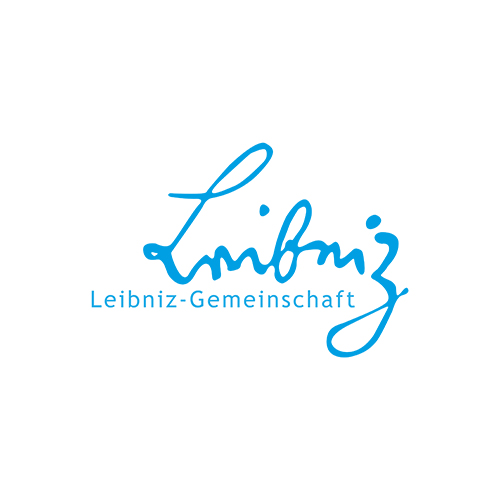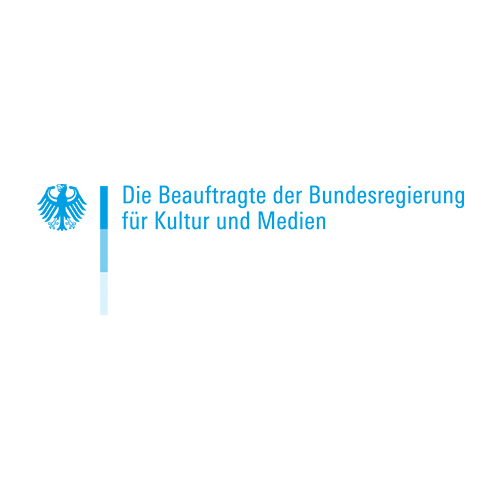Day 1
June 19th, 2017
Humboldt-Universität zu Berlin Humboldt Graduate School
Luisenstr 56, 10117 Berlin
| 17:00 | Welcome ↓ Michaela Marek Peter Haslinger Kilian Heck |
| 17:15 | Keynotes and discussion Erik Champion ↓ A Scholarly Ecosystem for3D Digital Heritage SimulationsFrédéric Kaplan ↓ A 4D World: The Time Machine Flagship |
| 19:00 | Reception |
Day 2
June 20th, 2017
Humboldt-Universität zu Berlin
Humboldt Graduate School
Luisenstr 56, 10117 Berlin
| 9:00 | Introduction Georg Schelbert Peter Haslinger |
● |
Moderation: Erik Champion |
| 9:15 |
Piotr Kuroczynski, Dietmar Popp ↓Marburg Virtual Research Environments:The New Research Space for Art History |
| 9:45 | Oliver Hauck, Martin Scholz↓ Frankfurt/Erlangen Methodology, Data Model and Implementation in the Virtual Research Environment |
| 10:15 | Carsten Neumann, Torsten Veit↓ Greifswald »Königsschlösser« in the Light of Digital Art History |
| 10:45 | Kaffeepause |
| 11:15 | Mieke Pfarr-Harfst, Krzysztof Koszewski↓ Darmstadt/Warsaw Dohna-Schlodien: A Virtual Exhibition: Digital Reconstruction of the Manor House and Garden |
| 11:45 | Jan Lutteroth, Arthur Sarnitz↓ Munich/Kaliningrad Friedrichstein: New Approaches in the Digital Reconstruction of the Manor House |
| 12:15 | Daniel Dworak, Maria Pietruszka ↓Gießen/Lodz Virtual Museum: Interactive Web-Based Visualisation of Destroyed Cultural Heritage |
| 12:45 | Mittagessen |
Welcome
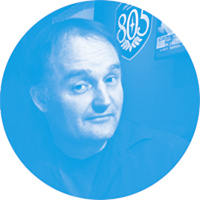 Professor Erik Champion is UNESCO Chair of CulturalVisualisation and Heritage at Curtin University and Visualisation theme leader at the Curtin Institute of Computation (http://computation.curtin.edu.au). He researches issues in the area of virtual heritage as well as game design, interactivemedia, and architectural computing. Before joining Curtin University he was Project leader of DIGHUMLAB in Denmark, a consortium of four Danish universities, hosted at Aarhus University. His publications include Critical Gaming: Interactive Historyand Virtual Heritage (Routledge, 2015), Playing with the Past (Springer, 2011), and Game Mods: Design, Theory and Criticism (ETC Press, 2012), which he edited. His next book project (in press) is Cultural Heritage Infrastructures in DigitalHumanities, (Routledge, 2017), with co-editors Agiati Benardou, Costis Dallas and Lorna Hughes.
Professor Erik Champion is UNESCO Chair of CulturalVisualisation and Heritage at Curtin University and Visualisation theme leader at the Curtin Institute of Computation (http://computation.curtin.edu.au). He researches issues in the area of virtual heritage as well as game design, interactivemedia, and architectural computing. Before joining Curtin University he was Project leader of DIGHUMLAB in Denmark, a consortium of four Danish universities, hosted at Aarhus University. His publications include Critical Gaming: Interactive Historyand Virtual Heritage (Routledge, 2015), Playing with the Past (Springer, 2011), and Game Mods: Design, Theory and Criticism (ETC Press, 2012), which he edited. His next book project (in press) is Cultural Heritage Infrastructures in DigitalHumanities, (Routledge, 2017), with co-editors Agiati Benardou, Costis Dallas and Lorna Hughes.
Erik Champion
A Scholarly Ecosystem for 3D Digital Heritage Simulations
 Professor Frédéric Kaplan holds the Digital HumanitiesChair at École Polytechnique Fédérale de Lausanne (EPFL) and directs the EPFL Digital Humanities Laboratory (DHLAB). He conducts research projects combining archive digitisation, information modelling and museographic design. He is currentlydirecting the “Venice Time Machine”, an international project in collaboration with the Ca’Foscari University in Venice and the Venice State Archives, aiming to model the evolution and history of Venice over a 1000-year period. He is alsoconducting projects with the Bibliothèque Nationale de France, the Bibliothèque Nationale Suisse, the Bodmer Foundation and the Musée de l’Elysée, and has participated in exhibitions at several museums including the Centre Pompidou in Paris andthe Museum of Modern Art in New York. He was local co-organiser of the Digital Humanities 2014 conference in Lausanne. He created the first Digital Humanities master’s course in Switzerland and is playing an active role in shaping a complete newcurriculum at EPFL.
Professor Frédéric Kaplan holds the Digital HumanitiesChair at École Polytechnique Fédérale de Lausanne (EPFL) and directs the EPFL Digital Humanities Laboratory (DHLAB). He conducts research projects combining archive digitisation, information modelling and museographic design. He is currentlydirecting the “Venice Time Machine”, an international project in collaboration with the Ca’Foscari University in Venice and the Venice State Archives, aiming to model the evolution and history of Venice over a 1000-year period. He is alsoconducting projects with the Bibliothèque Nationale de France, the Bibliothèque Nationale Suisse, the Bodmer Foundation and the Musée de l’Elysée, and has participated in exhibitions at several museums including the Centre Pompidou in Paris andthe Museum of Modern Art in New York. He was local co-organiser of the Digital Humanities 2014 conference in Lausanne. He created the first Digital Humanities master’s course in Switzerland and is playing an active role in shaping a complete newcurriculum at EPFL.
Frédéric Kaplan
A 4D World: The Time Machine Flagship

Piotr Kuroczynski is an architect specialising in the field of digital 3D reconstruction, documentation and dissemination of cultural heritage. Since 2005, he has been researching and teaching at the unit “Information andCommunication Technology in Architecture” of Professor Manfred Koob at the Technische Universität Darmstadt (PhD in 2010). Since 2010 he has also been a lecturer at the Warsaw University of Technology. Since 2013 he has been a scientific member ofstaff and project coordinator at the Herder Institute for Historical Research on East Central Europe. He is co-founder and convenor of the Digital Reconstruction Working Group of the Digital Humanities in German-speaking Region (DHd) Association.His interests include VREs, semantic data modelling, CAD/BIM, 3D modelling, documentation and visualisation standards for digital 3D reconstruction of cultural heritage. Since 2017 he has been Professor for Computer Science and Visualisation inArchitecture at Mainz University of Applied Sciences.
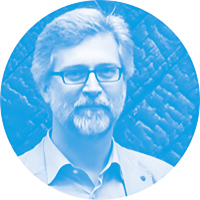
Dietmar Popp is an art historian and from 2000, head of the Scientific Collections, Photographical Archive, and Art History of East Central Europe departments at the Herder Institute, and Member of the Leibniz Association. Hestudied art history, archaeology and monument conservation in Bamberg and Karlsruhe. In 1994 he completed his PhD at the Technische Universität Berlin on “Duccio and Antiquity: Studies on the Image and Reception of Antiquity in Painting from Sienaat the Beginning of the 14th Century”. Since 2000 he has mainly focused on co-editing the project “Dehio-Handbuch der Kunstdenkmäler in Polen”. He also deals with the history of the Herder Institute’s collections, their tradition and thedocumentation of the cultural heritage of East Central Europe. Since 2006 he has been head of the Böckler Mare Balticum Foundation. The (digital) reconstruction of buildings, collections and museums in Poland and the Baltic States is one of his keyinterests.
Piotr Kuroczynski, Dietmar Popp
Virtual Research Environments: The New Research Space for Art History
 Oliver Hauck is an architect specialised in 3D reconstructionsand digitising spatial environments based in Frankfurt am Main. He studied architecture and urban design at the Technische Universität Darmstadt. From 1999–2006 he worked on the DFG funded research project “Die Hagia Sophia Justinians alsSchauplatz geistlicher und weltlicher Macht” at the TU Darmstadt’s chair of classical archaeology (Prof. Knell, Prof. Stichel). He worked at TU Darmstadt’s faculty of architecture with Professor Manfred Koob, leading the 3D reconstruction project“The Temples of Angkor” (2004−2010) followed by lectureship until 2013, from 2008–2013 also at Mainz University of Applied Sciences. In 2009 he started his PhD at TU Darmstadt’s chair of classical archaeology (Prof. Lang): “Zur Methodik derdreidimensionalen computergestützten Rekonstruktion von Gebäuden am Baispiel der Hagia Sophia Justinians in Istanbul”. In 2010 he founded the Institute of Space Representation in Frankfurt am Main. Since 2012 he has been a member of the board ofarchitects of the Federal State of Hesse..
Oliver Hauck is an architect specialised in 3D reconstructionsand digitising spatial environments based in Frankfurt am Main. He studied architecture and urban design at the Technische Universität Darmstadt. From 1999–2006 he worked on the DFG funded research project “Die Hagia Sophia Justinians alsSchauplatz geistlicher und weltlicher Macht” at the TU Darmstadt’s chair of classical archaeology (Prof. Knell, Prof. Stichel). He worked at TU Darmstadt’s faculty of architecture with Professor Manfred Koob, leading the 3D reconstruction project“The Temples of Angkor” (2004−2010) followed by lectureship until 2013, from 2008–2013 also at Mainz University of Applied Sciences. In 2009 he started his PhD at TU Darmstadt’s chair of classical archaeology (Prof. Lang): “Zur Methodik derdreidimensionalen computergestützten Rekonstruktion von Gebäuden am Baispiel der Hagia Sophia Justinians in Istanbul”. In 2010 he founded the Institute of Space Representation in Frankfurt am Main. Since 2012 he has been a member of the board ofarchitects of the Federal State of Hesse..
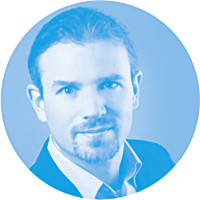 Martin Scholz is one of the principal developers of the WissKIvirtual research environment. He studied Computer Science and Chinese Studies in Erlangen. After his diploma in 2008, he became a research assistant at the Digital Humanities research group of the University of Erlangen-Nürnberg and startedworking for the DFG-funded project “Wissenschaftliche Kommunikations-Infrastruktur” (WissKI). Since 2017 he has been involved in the digitisation of the university collections in Erlangen as part of the BMBF-funded project “Objekte im Netz”. Hisresearch interests are in digital humanities, especially knowledge management, the Semantic Web, and natural language processing.
Martin Scholz is one of the principal developers of the WissKIvirtual research environment. He studied Computer Science and Chinese Studies in Erlangen. After his diploma in 2008, he became a research assistant at the Digital Humanities research group of the University of Erlangen-Nürnberg and startedworking for the DFG-funded project “Wissenschaftliche Kommunikations-Infrastruktur” (WissKI). Since 2017 he has been involved in the digitisation of the university collections in Erlangen as part of the BMBF-funded project “Objekte im Netz”. Hisresearch interests are in digital humanities, especially knowledge management, the Semantic Web, and natural language processing.
Oliver Hauck, Martin Scholz
Methodology, Data Models and ‑Implementation in the ViReBa Virtual Research Environment
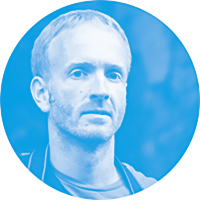 Carsten Neumann is an art historian. From 1991 to 1997 hestudied art history and history at the University of Greifswald, finishing with a master’s thesis entitled “Das Schaffen des Architekten Johann Friedrich Künnecke in Mecklenburg” (“The Works of the Architect Johann Friedrich Künnecke inMecklenburg”). He then studied for his doctorate at the University of Greifswald from 1998 to 2001. From 2002 to 2007 he worked on a range of projects in various roles for the Prussian Palaces and Gardens Foundation Berlin-Brandenburg. He completedhis PhD thesis on “Die Kunst am Hofe Herzog Ulrichs zu Mecklenburg” (“The arts at the court of Duke Ulrich of Mecklenburg”) in 2006. Since January 2014 Carsten Neumann has been a research associate in the project presented here, responsible forinvestigating the art and architectural history of the manor houses.
Carsten Neumann is an art historian. From 1991 to 1997 hestudied art history and history at the University of Greifswald, finishing with a master’s thesis entitled “Das Schaffen des Architekten Johann Friedrich Künnecke in Mecklenburg” (“The Works of the Architect Johann Friedrich Künnecke inMecklenburg”). He then studied for his doctorate at the University of Greifswald from 1998 to 2001. From 2002 to 2007 he worked on a range of projects in various roles for the Prussian Palaces and Gardens Foundation Berlin-Brandenburg. He completedhis PhD thesis on “Die Kunst am Hofe Herzog Ulrichs zu Mecklenburg” (“The arts at the court of Duke Ulrich of Mecklenburg”) in 2006. Since January 2014 Carsten Neumann has been a research associate in the project presented here, responsible forinvestigating the art and architectural history of the manor houses.
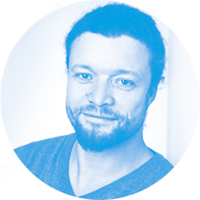 Torsten Veit is an art historian, stonemason and stone carver.After his apprenticeships in Germany and Italy he started studying art history and economics at the University of Greifswald. He achieved his BA in Art History in 2012, and his MA in 2015, with his thesis “Oberflächlich betrachtet –studies onsurface treatment and effect in baroque sculpture at Bernini and Schlüter”. He has been a graduate assistant in the project presented here since 2014. Currently, he is working on his PhD as a research assistant in the International ResearchTraining Group (IRTG) “Baltic Borderlands” at the University of Greifswald. He is researching the mobility of craftsmen in Europe during the 18th century from Upper Bavaria to the Baltic Sea Region. His doctoral research seeks to combine digitaland classical art historical methods and to prove the value of graphical network visualisations for art history.
Torsten Veit is an art historian, stonemason and stone carver.After his apprenticeships in Germany and Italy he started studying art history and economics at the University of Greifswald. He achieved his BA in Art History in 2012, and his MA in 2015, with his thesis “Oberflächlich betrachtet –studies onsurface treatment and effect in baroque sculpture at Bernini and Schlüter”. He has been a graduate assistant in the project presented here since 2014. Currently, he is working on his PhD as a research assistant in the International ResearchTraining Group (IRTG) “Baltic Borderlands” at the University of Greifswald. He is researching the mobility of craftsmen in Europe during the 18th century from Upper Bavaria to the Baltic Sea Region. His doctoral research seeks to combine digitaland classical art historical methods and to prove the value of graphical network visualisations for art history.
Carsten Neumann, Torsten Veit
“Königsschlösser” in the Light of Digital Art Histor
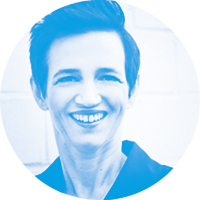 Mieke Pfarr-Harfst is currently working as Head of theResearch Department “Digital Reconstructions” at the Digital Design Unit, Technische Universität Darmstadt. Her PhD, in which she developed a documentation system for digital reconstructions, was awarded the Kurt Ruth Prize. Drawing on this workand her experience as a manager of international research projects, she is now investigating the fundamentals and basic principles of 3D models as an innovative methodology for research and dissemination in cultural heritage. She is co-founder andconvenor of the Digital Reconstruction Working Group of the Digital Humanities in German-speaking Region (DHd) Association. Mieke Pfarr-Harfst is regularly invited to give lectures at international institutes and act as a reviewer for variousorganisations and conferences. She was awarded two international grants at King’s College London and the University of Sarajevo. Until 2017, she also held a lectureship in History of Architecture at Mainz University of Applied Sciences. Currentlyshe is teaching master’s level classes in Digital Humanities at the Johannes Gutenberg University, Mainz.
Mieke Pfarr-Harfst is currently working as Head of theResearch Department “Digital Reconstructions” at the Digital Design Unit, Technische Universität Darmstadt. Her PhD, in which she developed a documentation system for digital reconstructions, was awarded the Kurt Ruth Prize. Drawing on this workand her experience as a manager of international research projects, she is now investigating the fundamentals and basic principles of 3D models as an innovative methodology for research and dissemination in cultural heritage. She is co-founder andconvenor of the Digital Reconstruction Working Group of the Digital Humanities in German-speaking Region (DHd) Association. Mieke Pfarr-Harfst is regularly invited to give lectures at international institutes and act as a reviewer for variousorganisations and conferences. She was awarded two international grants at King’s College London and the University of Sarajevo. Until 2017, she also held a lectureship in History of Architecture at Mainz University of Applied Sciences. Currentlyshe is teaching master’s level classes in Digital Humanities at the Johannes Gutenberg University, Mainz.
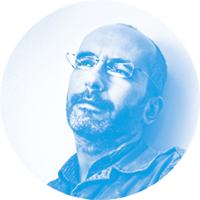 Krzysztof Koszewski, architect, PhD in architecture andurban planning, affiliated with Warsaw University of Technology (WUT), Faculty of Architecture, Chair of Architectural Design. Research interests include architectural heritage, visual communication in architecture, methodology of the designprocess and research by design problems. He is involved in academic research, teaching and administration. He is co-creator and director of the English-language master’s programme Architecture for Society of Knowledge at the Faculty of Architectureat WUT, and is currently involved in preparing an English-language PHD programme onthe same subject. He is the co-author of a visual system for a map portal presenting Polish listed architectural and archaeological monuments developed for National Heritage Board of Poland. He is a member of the Scientific Committee of theNational Heritage Board of Poland and Deputy Dean of Studies at the Faculty of Architecture, WUT (2008−2012 and 2016 onwards).
Krzysztof Koszewski, architect, PhD in architecture andurban planning, affiliated with Warsaw University of Technology (WUT), Faculty of Architecture, Chair of Architectural Design. Research interests include architectural heritage, visual communication in architecture, methodology of the designprocess and research by design problems. He is involved in academic research, teaching and administration. He is co-creator and director of the English-language master’s programme Architecture for Society of Knowledge at the Faculty of Architectureat WUT, and is currently involved in preparing an English-language PHD programme onthe same subject. He is the co-author of a visual system for a map portal presenting Polish listed architectural and archaeological monuments developed for National Heritage Board of Poland. He is a member of the Scientific Committee of theNational Heritage Board of Poland and Deputy Dean of Studies at the Faculty of Architecture, WUT (2008−2012 and 2016 onwards).
Mieke Pfarr-Harfst, Krzysztof Koszewski
Dohna-Schlodien: A virtual exhibition – Digital Reconstruction of the Manor House and Garden
 Jan Lutteroth studied art history and classical archaeologyat the LMU Munich. He completed a master’s on art crime and cultural heritage protection studies in Italy and is currently writing his PhD on visualisation strategies of digital 3D reconstructions under Professor Stephan Hoppe at the LMU Munich. Hehas been working as a scientific researcher for the project “Virtual Reconstructions in Transnational Research Environments”, primarilyon the digital 3D reconstruction of Friedrichstein manor and its surrounding buildings.
Jan Lutteroth studied art history and classical archaeologyat the LMU Munich. He completed a master’s on art crime and cultural heritage protection studies in Italy and is currently writing his PhD on visualisation strategies of digital 3D reconstructions under Professor Stephan Hoppe at the LMU Munich. Hehas been working as a scientific researcher for the project “Virtual Reconstructions in Transnational Research Environments”, primarilyon the digital 3D reconstruction of Friedrichstein manor and its surrounding buildings.
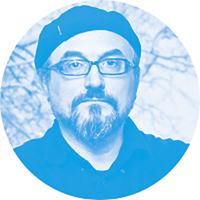 Arthur Sarnitz is an architect and general director of thearchitectural and design company Arthur Sarnitz – Koenigsberg (ASK), located in Kaliningrad, Russia. His company consists of architects and IT engineers. Since 2002 ASK has been engaged in projects using multipurpose 3D modelling software and thefast rendering software LUMION to create architectural visualisations. Arthur Sarnitz is well-known for sourced-based digital 3D reconstructions of over 1,000 historical buildings, mostly architecture of the formerly German city of Koenigsberg.Some of these are presented on the website www.altstadt.ru. Besides, ASK is known for creating suggestions for the architectural planning of the Governmental Historical and Cultural Complex on the former King’s Mountain with the King’s Castle – thehistorical heart of the city of Kaliningrad/Koenigsberg.
Arthur Sarnitz is an architect and general director of thearchitectural and design company Arthur Sarnitz – Koenigsberg (ASK), located in Kaliningrad, Russia. His company consists of architects and IT engineers. Since 2002 ASK has been engaged in projects using multipurpose 3D modelling software and thefast rendering software LUMION to create architectural visualisations. Arthur Sarnitz is well-known for sourced-based digital 3D reconstructions of over 1,000 historical buildings, mostly architecture of the formerly German city of Koenigsberg.Some of these are presented on the website www.altstadt.ru. Besides, ASK is known for creating suggestions for the architectural planning of the Governmental Historical and Cultural Complex on the former King’s Mountain with the King’s Castle – thehistorical heart of the city of Kaliningrad/Koenigsberg.
Jan Lutteroth, Arthur Sarnitz
Friedrichstein: New Approaches in the Digital Reconstruction of the Manor House
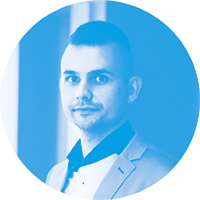 Daniel Dworak specialises in 3D Web-based computervisualisation, 3D data retrieval, storage, compression and transmission improvement. Since 2013 he has been working on his doctoral thesis at the Faculty of Technical Physics, Information Technology and Applied Mathematics, Łódz´ University ofTechnology. The subject is the compression of large computer graphics data sets for interactive internet applications. From 2013 to 2016 he worked at the Centre for Media and Interactivity (ZMI) at JLU Gießen in the project “Digital 3DReconstructions in Virtual Research Environments”. He was responsible for programming, designing, improving and elaborating a 3D Web layer for displaying, retrieving and connecting a 3D interactive environment for a Virtual Museum. He had the ideaof encoding, storing, transmitting and decoding of 3D data from two-dimensional PNG based format, (3dPNG), which reduces files with 3D models by a factor of twelve. Dworak also proposed a modified technique for reducing model geometry and creatingnew faces of geometry.
Daniel Dworak specialises in 3D Web-based computervisualisation, 3D data retrieval, storage, compression and transmission improvement. Since 2013 he has been working on his doctoral thesis at the Faculty of Technical Physics, Information Technology and Applied Mathematics, Łódz´ University ofTechnology. The subject is the compression of large computer graphics data sets for interactive internet applications. From 2013 to 2016 he worked at the Centre for Media and Interactivity (ZMI) at JLU Gießen in the project “Digital 3DReconstructions in Virtual Research Environments”. He was responsible for programming, designing, improving and elaborating a 3D Web layer for displaying, retrieving and connecting a 3D interactive environment for a Virtual Museum. He had the ideaof encoding, storing, transmitting and decoding of 3D data from two-dimensional PNG based format, (3dPNG), which reduces files with 3D models by a factor of twelve. Dworak also proposed a modified technique for reducing model geometry and creatingnew faces of geometry.
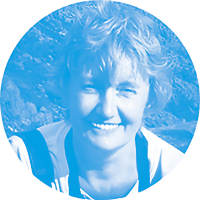 Maria Pietruszka is associate professor at the Faculty ofTechnical Physics, Information Technology and Applied Mathematics, Łódz University of Technology and at the Faculty of Economics and Sociology, University of Łódz´. From 1994–1998 and 2009–2013 she has been Vice-Head of the Institute of InformationTechnology, where she has led the computer graphics and multimedia research group since 1995. Her research focuses on two domains: computer graphics (visualisation of huge data structures and real time graphic systems), multimedia and the Web. In1995, she initiated research into virtual reality systems at the Institute of Information Technology. She is the author or co-author over 90 publications, member of the Editorial Board of the Journal of Applied Computer Science (JACS), andsupervisor of 6 PhD dissertations. She has contributed to many research projects supported by industry, the Ministry of National Education, and the State Committee for Scientific Research in Poland.
Maria Pietruszka is associate professor at the Faculty ofTechnical Physics, Information Technology and Applied Mathematics, Łódz University of Technology and at the Faculty of Economics and Sociology, University of Łódz´. From 1994–1998 and 2009–2013 she has been Vice-Head of the Institute of InformationTechnology, where she has led the computer graphics and multimedia research group since 1995. Her research focuses on two domains: computer graphics (visualisation of huge data structures and real time graphic systems), multimedia and the Web. In1995, she initiated research into virtual reality systems at the Institute of Information Technology. She is the author or co-author over 90 publications, member of the Editorial Board of the Journal of Applied Computer Science (JACS), andsupervisor of 6 PhD dissertations. She has contributed to many research projects supported by industry, the Ministry of National Education, and the State Committee for Scientific Research in Poland.
Daniel Dworak, Maria Pietruszka
Virtual Museum: Exploring the Past
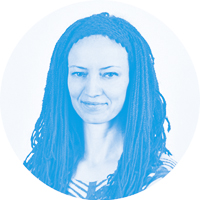 Inge Hinterwaldner is currently professor of modern and contemporaryart at the Institute of Art and Visual History of the Humboldt University in Berlin. In 2009 she received her PhD in art history from the University of Basel with a thesis on interactive computer simulations (The Systemic Image, German: Fink 2010,English: MIT Press 2017). Fellowships and grants allowed her to pursue her research at MECS in Lüneburg (2014), Duke University in Durham/NC (2015), and MIT in Cambridge/MA (2016). Her research focuses on interactivity and temporality in the arts,computer-based art and architecture, model theory, and the interdependence between the arts and the sciences since the 19th century. Currently she is writing a book on Fluid Form Conceptions in kinetic art since the 1960s. She has co-editedseveral volumes on a range of subjects, including addressing medical and scientific visualizations as composites (2006), the relation between image production and modelling practices (2011, 2017), and disposable images (2016).
Inge Hinterwaldner is currently professor of modern and contemporaryart at the Institute of Art and Visual History of the Humboldt University in Berlin. In 2009 she received her PhD in art history from the University of Basel with a thesis on interactive computer simulations (The Systemic Image, German: Fink 2010,English: MIT Press 2017). Fellowships and grants allowed her to pursue her research at MECS in Lüneburg (2014), Duke University in Durham/NC (2015), and MIT in Cambridge/MA (2016). Her research focuses on interactivity and temporality in the arts,computer-based art and architecture, model theory, and the interdependence between the arts and the sciences since the 19th century. Currently she is writing a book on Fluid Form Conceptions in kinetic art since the 1960s. She has co-editedseveral volumes on a range of subjects, including addressing medical and scientific visualizations as composites (2006), the relation between image production and modelling practices (2011, 2017), and disposable images (2016).
Inge Hinterwaldner
Zwischen Aspektivität, Affordanz und big data. Überlegungen zur Modellthematik
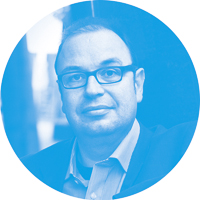 Stephan Hoppe is Professor of Art History at the LMU Munich. He is theco-editor of several volumes dedicated to the Northern Renaissance, such as Stil als Bedeutung (Regensburg 2008) and has published a textbook on baroque architecture and town planning. His main fields of interest are architecture and court culturein the Central Europe of the early modern period. He is currently working on architectural representations like drawings, town plans, scale models and digital visualisations. A special focus is interaction between architecture and the pictorialarts. In 2009he cofounded the private eHumanities think tank and agency pausanio.com and is an expert in Digital Art History. Since 2015 he directs the long term research project “Corpus der barocken Deckenmalerei in Deutschland” on monumental ceilingpainting of the early modern period at the Bayerische Akademie der Wissenschaften (Munich), which is part of the Academies Programme of the Union of the German Academies of Sciences and Humanities. He is a board member of the research projectResidenzstädte im Alten Reich (1300−1800) at the Göttingen Academy of Sciences and Humanities, the chief editor of the interdisciplinary quarterly journal “Burgen und Schlösser” and a board member of “architectura moderna (ARCHMOD). ArchitecturalExchanges in Europe, 16th-17th centuries” (Brepols).
Stephan Hoppe is Professor of Art History at the LMU Munich. He is theco-editor of several volumes dedicated to the Northern Renaissance, such as Stil als Bedeutung (Regensburg 2008) and has published a textbook on baroque architecture and town planning. His main fields of interest are architecture and court culturein the Central Europe of the early modern period. He is currently working on architectural representations like drawings, town plans, scale models and digital visualisations. A special focus is interaction between architecture and the pictorialarts. In 2009he cofounded the private eHumanities think tank and agency pausanio.com and is an expert in Digital Art History. Since 2015 he directs the long term research project “Corpus der barocken Deckenmalerei in Deutschland” on monumental ceilingpainting of the early modern period at the Bayerische Akademie der Wissenschaften (Munich), which is part of the Academies Programme of the Union of the German Academies of Sciences and Humanities. He is a board member of the research projectResidenzstädte im Alten Reich (1300−1800) at the Göttingen Academy of Sciences and Humanities, the chief editor of the interdisciplinary quarterly journal “Burgen und Schlösser” and a board member of “architectura moderna (ARCHMOD). ArchitecturalExchanges in Europe, 16th-17th centuries” (Brepols).
Stephan Hoppe
Wie können wir die neuen 3D-Daten nutzen? Kunsthistorische Potenziale des digitalen Zugriffs auf die Raumdimension am Beispiel des Corpus der barocken Deckenmalerei in Deutschland
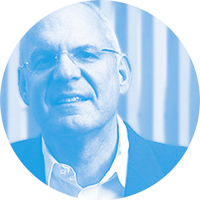 Kai Kappel ist seit 2012 Professor für die Geschichte der Architektur und desStädtebaus an der Humboldt-Universität zu Berlin. Studium der Kunstgeschichte, Klassische Archäologie und der Geschichte in Mainz, Heidelberg und Bonn; Dissertation über S. Nicola in Bari und seine architektonische Nachfolge (1996);Habilitationsschrift: Memento 1945? Kirchenbau aus Kriegsruinen und Trümmersteinen in den Westzonen und in der Bundesrepublik Deutschland (2008). Schwerpunkte in Forschung und Lehre: Architekturgeschichte des Mittelalters und des 19.–21.Jahrhunderts, vor allem in Deutschland, Italien und Spanien. Im Einzelnen: Mittelalterrezeption, Reformbaukunst und Traditionalismus im 20. Jahrhundert (insbesondere genossenschaftliche Strukturen und Gegenentwürfe zu einer Welt des Eigentums);Geschichtsbilder und Erinnerungskultur in der Architektur des 20. und 21. Jh. (auch und gerade hinsichtlich der beiden Weltkriege und der NS-Verbrechen); die Wahrnehmung des Anderen/Fremden in der Moderne (insbesondere Architektenreisen). 2016Mitbegründer des Netzwerks Kunstgeschichte und Digitalität, einem Zusammenschluss von KunsthistorikerInnen an der Freien Univeristät, der Humboldt-Universität, der Technischen Universität und der Hochschule für Technik und Wirtschaft in Berlin.
Kai Kappel ist seit 2012 Professor für die Geschichte der Architektur und desStädtebaus an der Humboldt-Universität zu Berlin. Studium der Kunstgeschichte, Klassische Archäologie und der Geschichte in Mainz, Heidelberg und Bonn; Dissertation über S. Nicola in Bari und seine architektonische Nachfolge (1996);Habilitationsschrift: Memento 1945? Kirchenbau aus Kriegsruinen und Trümmersteinen in den Westzonen und in der Bundesrepublik Deutschland (2008). Schwerpunkte in Forschung und Lehre: Architekturgeschichte des Mittelalters und des 19.–21.Jahrhunderts, vor allem in Deutschland, Italien und Spanien. Im Einzelnen: Mittelalterrezeption, Reformbaukunst und Traditionalismus im 20. Jahrhundert (insbesondere genossenschaftliche Strukturen und Gegenentwürfe zu einer Welt des Eigentums);Geschichtsbilder und Erinnerungskultur in der Architektur des 20. und 21. Jh. (auch und gerade hinsichtlich der beiden Weltkriege und der NS-Verbrechen); die Wahrnehmung des Anderen/Fremden in der Moderne (insbesondere Architektenreisen). 2016Mitbegründer des Netzwerks Kunstgeschichte und Digitalität, einem Zusammenschluss von KunsthistorikerInnen an der Freien Univeristät, der Humboldt-Universität, der Technischen Universität und der Hochschule für Technik und Wirtschaft in Berlin.
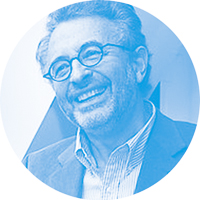 Achim Hubel, geb. 1945, Studium der Kunstgeschichte, Klassische Archäologie undmittelalterlichen Geschichte in Regensburg und München, Promotion in Kunstgeschichte 1972, 1973–74 Museumsvolontär in Köln und München, 1974–1981 Diözesankonservator in Regensburg sowie Lehrbeauftragter für Kunstgeschichte an der UniversitätRegensburg, seit 1981 Professor für Denkmalpflege am Institut für Archäologie, Denkmalkunde und Kunstgeschichte der Universität Bamberg; 1996–1999 stellvertretender Sprecher, 1999–2002 Sprecher des Graduiertenkollegs „Kunstwissenschaft –Bauforschung – Denkmalpflege“ der Universität Bamberg und der TU Berlin. Seit 2011 im Ruhestand. Mitglied des Deutschen Nationalkomitees von ICOMOS; Mitglied der Mittelalterkommission der Berlin-Brandenburgischen Akademie der Wissenschaften, indieser Funktion Projektleiter des Corpus Vitrearum Medii Aevi, Arbeitsstelle für Glasmalereiforschung in Potsdam. Zahlreiche Veröffentlichungen zur Architektur, Skulptur und Malerei des Mittelalters, zur Goldschmiedekunst, zur Denkmalkunde sowiezur Geschichte und Theorie der Denkmalpflege.
Achim Hubel, geb. 1945, Studium der Kunstgeschichte, Klassische Archäologie undmittelalterlichen Geschichte in Regensburg und München, Promotion in Kunstgeschichte 1972, 1973–74 Museumsvolontär in Köln und München, 1974–1981 Diözesankonservator in Regensburg sowie Lehrbeauftragter für Kunstgeschichte an der UniversitätRegensburg, seit 1981 Professor für Denkmalpflege am Institut für Archäologie, Denkmalkunde und Kunstgeschichte der Universität Bamberg; 1996–1999 stellvertretender Sprecher, 1999–2002 Sprecher des Graduiertenkollegs „Kunstwissenschaft –Bauforschung – Denkmalpflege“ der Universität Bamberg und der TU Berlin. Seit 2011 im Ruhestand. Mitglied des Deutschen Nationalkomitees von ICOMOS; Mitglied der Mittelalterkommission der Berlin-Brandenburgischen Akademie der Wissenschaften, indieser Funktion Projektleiter des Corpus Vitrearum Medii Aevi, Arbeitsstelle für Glasmalereiforschung in Potsdam. Zahlreiche Veröffentlichungen zur Architektur, Skulptur und Malerei des Mittelalters, zur Goldschmiedekunst, zur Denkmalkunde sowiezur Geschichte und Theorie der Denkmalpflege.
Kai Kappel, Achim Hubel
Zwischen Wissensspeicher und Visualisierungsinstrument – Fragen zur digitalen Rekonstruktion aus der Architektur- und Kunstgeschichte
 Bernd Fröhlich is a full professor of Computer Science atBauhaus-Universität Weimar. He is chair of the Virtual Reality and Visualization Research Group. His work focuses on basic and applied research into multi-user virtual reality and 3D user interfaces, visualisation and rendering algorithms forvery large datasets, and information visualisation. After completing his PhD in computer science at the Technical University of Braunschweig, he worked at the German National Research Center for Information Technology (GMD) and was a researchassociate with the computer science department at Stanford University. He is a cofounder and member of the steering committee of the IEEE Symposium on 3D User Interfaces, chair of the steering committee of the IEEE Virtual Reality conference andreceived the 2008 Virtual Reality Technical Achievement Award. Froehlich serves as an associate editor of the journal Frontiers in Virtual Environments.
Bernd Fröhlich is a full professor of Computer Science atBauhaus-Universität Weimar. He is chair of the Virtual Reality and Visualization Research Group. His work focuses on basic and applied research into multi-user virtual reality and 3D user interfaces, visualisation and rendering algorithms forvery large datasets, and information visualisation. After completing his PhD in computer science at the Technical University of Braunschweig, he worked at the German National Research Center for Information Technology (GMD) and was a researchassociate with the computer science department at Stanford University. He is a cofounder and member of the steering committee of the IEEE Symposium on 3D User Interfaces, chair of the steering committee of the IEEE Virtual Reality conference andreceived the 2008 Virtual Reality Technical Achievement Award. Froehlich serves as an associate editor of the journal Frontiers in Virtual Environments.
Bernhard Fröhlich
Gemeinsame Exploration digitaler Rekonstruktionen aus der Kunst- und Kulturgeschichte in kollaborativer virtueller Realität
 Ina Blümel is architect and acting professor for Open Science, DigitalLibraries and Research Infrastructures at Hannover University of Applied Sciences and Arts. She conducts research at the Open Science Lab of the German National Library of Science and Technology (TIB), co-facilitating collaborative open bookprojects and the European community on Linked Open Data for research information. At TIB she has been working on several digital library projects to enable automatic indexing and provision of research items like 3D models in architectural domains.A current project on open access images integrates this research field with the infrastructure of Wikimedia Commons and Wikidata. Ina initiated the Open Science in Higher Education initiative at Leibniz Research Alliance Science 2.0 and is mentorin the Wikimedia DE /Open Science Fellows Programme.
Ina Blümel is architect and acting professor for Open Science, DigitalLibraries and Research Infrastructures at Hannover University of Applied Sciences and Arts. She conducts research at the Open Science Lab of the German National Library of Science and Technology (TIB), co-facilitating collaborative open bookprojects and the European community on Linked Open Data for research information. At TIB she has been working on several digital library projects to enable automatic indexing and provision of research items like 3D models in architectural domains.A current project on open access images integrates this research field with the infrastructure of Wikimedia Commons and Wikidata. Ina initiated the Open Science in Higher Education initiative at Leibniz Research Alliance Science 2.0 and is mentorin the Wikimedia DE /Open Science Fellows Programme.
Ina Blümel
3D Forschungsdaten
Final Discussion
Credits
Veranstaltet von:
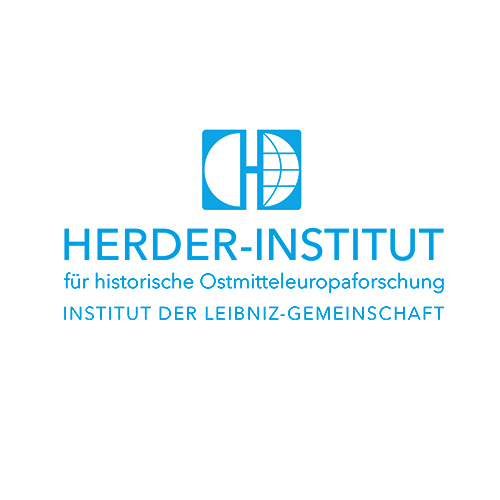

In Kooperation mit:
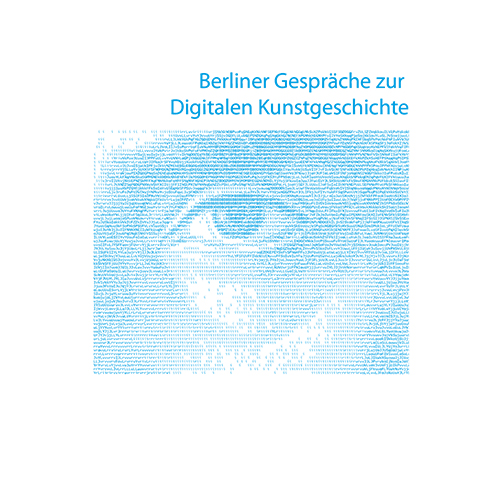
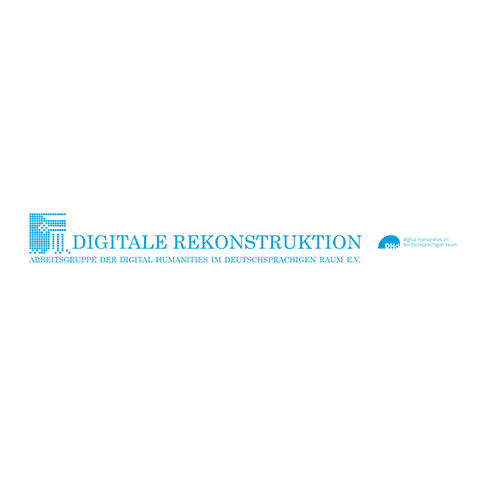
Gefördert von::
